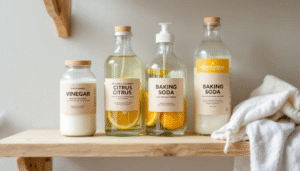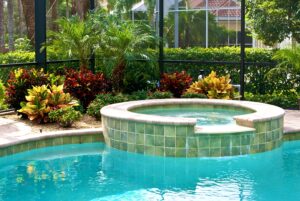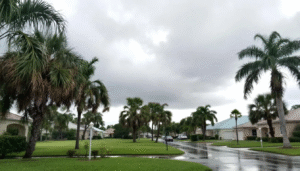Beating the Florida Humidity: How to Prevent Mold and Mildew in Your Home
Living in Naples is a dream. We are surrounded by breathtaking natural beauty, pristine beaches, and a warm, sunny climate. But as every Southwest Florida resident knows, our paradise comes with a pervasive, invisible challenge: humidity. That thick, moisture-laden air we feel when we step outside is constantly trying to make its way inside, creating the perfect breeding ground for an unwelcome houseguest: mold.
Mold is more than just an unsightly black spot on your bathroom grout. Mold and mildew are types of fungi, naturally present in the environment, where they help decompose organic matter. It is a silent threat to both your property’s integrity and, more importantly, your family’s health. It can trigger allergies, exacerbate asthma, and cause a host of respiratory issues. In our subtropical environment, preventing mold isn’t a one-time task; it’s a year-round commitment to proactive home maintenance.
But it doesn’t have to be overwhelming. This guide is your definitive plan for winning the war against humidity. We will explore the science of why mold thrives here, provide a powerful 5-point prevention strategy, and offer actionable, room-by-room tips to keep your Naples home clean, healthy, and beautifully mold-free.
Understanding the Enemy: Why Mold Thrives in Southwest Florida
To defeat an enemy, you must first understand it. Mold is a type of fungus, and its spores are a natural part of our environment, floating harmlessly in the air both indoors and out. There are many types of molds, each with different characteristics, but all requiring similar conditions to grow. These spores are not a problem until they find the right conditions to land, grow, and colonize. To thrive, mold needs three key ingredients, all of which are abundant in Florida:
Moisture: This is the most critical ingredient. High humidity, condensation, a water leak, or flood damage all provide the water mold needs to activate.
A Food Source: Mold can feed on a wide variety of organic materials commonly found in our homes, including the paper on drywall, wood studs, carpet backing, and even dust and dander. Certain building materials, such as wood, paper, and glues, can serve as food sources for mold. Using mold-resistant building materials can help prevent mold formation, especially in moisture-prone areas like bathrooms.
Warmth: Our consistently warm temperatures create an ideal incubator for mold growth.
When these three conditions are met, a few dormant spores can explode into a visible colony in as little as 24 to 48 hours. The key to prevention is to ruthlessly eliminate the one ingredient you have the most control over: excess moisture.
The Hidden Dangers: Health Risks and Consequences of Mold
Mold growth isn’t just a cosmetic issue—it’s a serious health concern that can impact everyone in your home. When mold spores are released into the air, they can easily be inhaled, leading to a range of allergic reactions. Common symptoms include a runny nose, sneezing, skin rash, and itchy eyes. For those with asthma or respiratory sensitivities, exposure to mold can trigger asthma attacks and worsen existing breathing problems. Even healthy individuals may experience coughing, throat irritation, or other discomforts when mold is present.
The Environmental Protection Agency warns that prolonged exposure to mold can lead to more severe health concerns, especially for children, the elderly, and anyone with a weakened immune system. In rare cases, certain types of mold can even contribute to neurological symptoms or chronic respiratory issues. That’s why mold prevention is so important—by controlling indoor humidity, fixing plumbing leaks promptly, and maintaining a regular cleaning routine, you can prevent mold growth before it becomes a threat.
If you notice signs of mold, such as a musty odor or visible spots, take action immediately. Addressing moisture problems and cleaning affected areas quickly can help protect your family from the hidden dangers of mold. Remember, a healthy home starts with diligent mold prevention and moisture control.
Your Proactive 5-Point Mold Prevention Strategy

Preventing mold is a holistic effort. It’s about managing your entire home’s ecosystem. Follow these five crucial strategies to create an inhospitable environment for mold.
1. Master Your Air Conditioner (Your #1 Weapon)
Your A/C unit does more than just cool your home; it is your single most powerful dehumidifier. Using it correctly is the cornerstone of mold prevention in Florida.
Keep it Running: When you leave your home, especially for an extended period, do not turn your A/C off completely. The indoor temperature will skyrocket, and humidity will build rapidly, creating a perfect petri dish for mold.
Set it to “Auto,” Not “On”: The fan setting on your thermostat should always be set to “Auto.” When the fan is set to “On,” it runs continuously, even when the cooling coils aren’t active. This can blow the moisture the A/C just pulled from the air right back into your home. The “Auto” setting ensures the fan only runs during a cooling cycle, allowing moisture to properly drain away outside.
Schedule Regular Professional HVAC Service: Your A/C is a complex machine. Have it serviced by a licensed professional at least once, preferably twice, a year. They will clean the coils, check the drain lines for clogs (a common source of water leaks), and ensure the entire system is operating at peak efficiency to effectively remove humidity.
Change Your Air Filters Frequently: A clogged air filter restricts airflow, making your A/C less efficient at cooling and dehumidifying. During the hot, humid summer months, check your filter monthly and change it when it’s dirty. Use a high-quality filter with a MERV (Minimum Efficiency Reporting Value) rating of 8-11 to capture smaller particles, including mold spores.
2. Control and Monitor Indoor Humidity Levels
You can’t control what you don’t measure. Knowledge is power in the fight against humidity.
Invest in a Hygrometer: This is an inexpensive, essential tool for any Florida homeowner. A hygrometer is a small digital device that measures the relative humidity inside your home. You can buy them online or at any home improvement store. Place a few in different areas of your home.
Know Your Target: The ideal indoor humidity level for preventing mold growth is between 45% and 55%. If your home is consistently creeping above 60%, you need to take action.
Use Dehumidifiers Strategically: If you have specific areas that are consistently damp, like a laundry room, a walk-in closet with poor airflow, or a garage, supplement your A/C with a standalone dehumidifier. Run it regularly to keep the humidity in that specific zone under control.
3. Promote Constant Air Circulation
Stagnant, moist air is mold’s best friend. Keeping the air moving throughout your home prevents moisture from settling and creating problem spots.
Use Your Ceiling Fans: Ceiling fans are not just for cooling. Running them on a low speed, even when you’re not in the room, keeps the air from becoming stagnant. This is especially important in bedrooms and large living areas.
Don’t Over-Pack Closets: Avoid packing closets to the brim. Air needs to be able to circulate around your clothes and belongings, especially in closets located on exterior walls. Leave a small gap between your things and the wall.
Keep Interior Doors Open: When possible, keep interior doors open to create a cross-breeze and allow your A/C system to circulate air evenly throughout the entire house.
4. Practice Diligent Moisture & Leak Management
Everyday activities can introduce a lot of moisture into your home’s air. Managing it is key.
Use Your Exhaust Fans: Your kitchen and bathroom exhaust fans are critical tools. Run the bathroom fan during every shower and for at least 20-30 minutes afterward to vent steam and moisture outside. Use the kitchen range hood every time you cook, especially when boiling water. Exhaust fans help remove moisture from the air to prevent mold and mildew. It’s also important to keep bathroom walls dry, inspect them regularly for mold, and consider using mold-resistant materials on bathroom walls to maintain a healthy environment.
Check for Leaks Regularly: Once a month, do a quick check under every sink in your home (kitchen, bathrooms, laundry). Look for drips or signs of water damage. Also, check the hoses connected to your washing machine, dishwasher, and refrigerator ice maker. A tiny, slow leak can create a massive mold problem behind a wall or under a cabinet.
Manage Shower Moisture: After showering, use a squeegee to wipe down the glass doors and tile walls. This removes the majority of the moisture that would otherwise evaporate into the air. Don’t leave wet towels bunched up on the floor or in a hamper; hang them up to dry completely.
Maintain Shower Curtains: Regularly wash and dry your shower curtains and liners, and choose mold-resistant shower curtains to help prevent mold growth.
Ensure Proper Insulation: Make sure your bathroom walls have proper insulation to reduce humidity and condensation, which helps prevent mold growth.
5. The Role of Meticulous Home Maintenance
A clean home is a less-hospitable environment for mold.
Control Dust: Dust isn’t just dirt; it’s an organic food source for mold spores. Regular, thorough cleaning and dusting by a professional service removes this key ingredient from the equation. Use appropriate household cleaners as part of your regular cleaning routine to prevent mold and mildew.
Clean and Dry Bathroom Fabrics: Regularly clean and dry fabric items in the bathroom, such as towels, bath mats, and shower curtains, to prevent mold and mildew buildup. Wash these fabric items frequently and follow care instructions to keep them mold-free.
Outdoor Maintenance: Ensure your gutters are clean and directing water away from your foundation. Check that your sprinkler heads are aimed at the lawn, not spraying against the walls of your house. Keep landscaping trimmed back to allow air to circulate around your home’s exterior.
Don’t Forget the Outside: Managing External Water Sources
While it’s easy to focus on indoor moisture, the battle against mold growth starts outside your home. External water sources—like poor drainage, clogged gutters, or even condensation from warm air meeting cool surfaces—can lead to moisture buildup that seeps indoors, creating the perfect environment for mold.
To prevent excess moisture from becoming a problem, make sure your property has proper drainage systems in place. This includes keeping gutters and downspouts clear so water flows away from your foundation, and ensuring the ground around your home slopes away to prevent pooling. Inspect your crawl space regularly for signs of dampness or standing water, and keep it clean and dry to avoid hidden mold growth.
Seal any cracks or gaps in your home’s exterior walls, windows, and doors to keep humid air and moisture out. Pay attention to areas where condensation forms, as these can be early warning signs of a moisture problem. Regularly check for water damage or discoloration on exterior surfaces, and address any issues promptly to maintain effective moisture control.
By managing external water sources and monitoring humidity levels around your home, you can significantly reduce the risk of mold growth and keep your living space clean, dry, and healthy.
A Room-by-Room Vulnerability Checklist
Be extra vigilant in these common problem areas:
Bathrooms: Check grout lines, caulk around the tub and sink, under the sink vanity, the exhaust fan cover, and inspect ceiling tiles for signs of water damage or hidden mold. Don’t forget to look in empty spaces, such as behind toilets or under cabinets, where moisture can accumulate.
Kitchen: Look under the sink, around the base of the faucet, inside the refrigerator drip pan, around the dishwasher door seal, and inspect ceiling tiles for any water stains or mold, especially in areas prone to leaks.
Laundry Room: Check the washing machine’s rubber gasket (especially on front-loaders), the wall connections for the water hoses, and inspect carpets for dampness or mold, particularly if there has been water spillage.
Closets: Pay close attention to closets on exterior walls or those that are packed tightly, as they often have poor airflow. Inspect carpets and any stored furniture for signs of mold or mildew.
Windows & Lanais: Check window sills for condensation, which can indicate high humidity or a leaky seal. Ensure lanai doors have a good seal to keep humid air out. Also, check for mold on nearby furniture and in empty spaces around window frames.
Note: Porous materials like drywall, ceiling tiles, carpets, and certain textiles are more susceptible to mold and may require special attention or professional cleaning if mold is detected.
“I Found Mold. Now What?” – A Calm Action Plan
Discovering mold can be alarming, but don’t panic. It’s important to rid your home of mold completely to protect your health and prevent recurrence.
Assess, Don’t Touch: Do not touch or try to wipe away the mold with a dry cloth. This can release millions of spores into the air, potentially spreading the problem.
Determine the Scope: If visible mold is present, sampling is usually not necessary to determine contamination. If the affected area is small (generally considered less than 10 square feet) and on a non-porous surface like tile or glass, it can often be handled as a DIY project.
Clean Small Areas Safely: To clean mold in small areas of surface mildew, spray the area with a solution of either white vinegar or hydrogen peroxide (do not mix them). Let it sit for 10-15 minutes, then scrub with a soft brush for delicate surfaces and rinse with water. For wood furniture or carpets, use a damp cloth to gently wipe away mildew stains, avoiding excessive moisture. Wear long gloves and an N95 mask as part of your personal protective equipment. Chlorine bleach can be used to disinfect non-porous surfaces, but it is not effective on absorbent or porous materials, as it cannot penetrate and kill mold roots. Always use appropriate cleaning solutions and techniques to ensure you effectively clean mold and prevent its return.
Know When to Call a Professional: You must call a licensed mold remediation company if:
The moldy area is larger than 10 square feet.
The mold is on a porous surface like drywall or wood.
You suspect mold is growing inside a wall or your HVAC system.
There is a strong, persistent musty odor in your home.
Moldy items, such as fabric, upholstery, or furniture, cannot be cleaned thoroughly and should be discarded.
Professional remediation is needed for absorbent or porous materials with significant mold growth, as these materials can harbor mold deep within and are difficult to clean or dry completely.
A cleaning service can help with surface mildew, but a true mold infestation requires a specialized remediation expert.
How Magnolia Cleaning Helps Protect Your Home
While we are not a mold remediation company, our professional cleaning services are a powerful, proactive part of your mold prevention strategy. A meticulously maintained home is a less inviting environment for mold.
We Remove Mold’s Food Source: Our thorough, top-to-bottom dusting and cleaning removes the organic particles that mold needs to thrive.
We Are Your Eyes and Ears: During our regular visits, our trained technicians are often the first to spot the early warning signs of a leak under a sink or condensation around a window sill, allowing you to catch problems before they escalate.
We Keep Problem Areas in Check: Our detailed bathroom and kitchen cleaning helps keep surface mildew from ever getting a foothold.
Protect your health and your investment. Partner with Magnolia Cleaning for a meticulously clean home that is the foundation of a healthy, mold-resistant environment.
Q&A: Your Florida Humidity & Mold Questions Answered
What is the ideal humidity level to set on my thermostat for my Naples home? The ideal relative humidity for preventing mold is between 45% and 55%. Most modern smart thermostats allow you to see the current indoor humidity. If yours doesn’t, a simple, inexpensive digital hygrometer is a great investment.
Are dehumidifiers expensive to run? The running cost depends on the size of the unit and your electricity rate, but modern, Energy Star-rated dehumidifiers are quite efficient. The small cost of running a dehumidifier in a damp area is insignificant compared to the thousands of dollars it can cost to remediate a major mold problem.
I’m a snowbird leaving for the summer. What is the absolute best way to protect my vacant home? It is critical that you leave your A/C running. Set the thermostat to a reasonable temperature, around 78-80°F, and ensure the fan is on “Auto.” The best solution is to have a humidistat installed, which will automatically turn on your A/C only when the humidity rises above a set point (e.g., 58%), saving energy while protecting your home. Also, have a trusted neighbor or home watch service check on your property regularly.
I’ve heard you shouldn’t use bleach to kill mold. Is that true? Yes, for the most part. While bleach can kill surface mold on non-porous surfaces like tile or tubs, the CDC does not recommend it as a routine practice. On porous surfaces like drywall or wood, the chlorine in bleach cannot penetrate to kill the mold’s roots, but the water in the bleach solution feeds them, often making the problem worse in the long run. Mold exposure can lead to potential health problems, including allergies, asthma, and respiratory infections. For disease control, health authorities like the CDC recommend following proper mold remediation guidelines to prevent these risks.
Does my homeowner’s insurance cover mold removal? This is a very complex question. Most standard homeowner’s insurance policies have very limited or excluded coverage for mold damage. Coverage often depends on the source of the moisture; for example, mold from a sudden, accidental event like a burst pipe may be covered, but mold from long-term high humidity or deferred maintenance is almost never covered. It is essential to read your policy carefully and speak with your insurance agent.
Are there special mold remediation guidelines for commercial buildings? Yes, commercial buildings must follow specific protocols and guidelines for mold remediation and maintaining indoor air quality. These standards are designed to protect occupants and ensure disease control by minimizing potential health problems associated with mold exposure.
Conclusion: Your Mold-Free Florida Home Starts Here
Achieving a mold-free home in Florida’s humid climate is absolutely possible with the right approach. Mold prevention is all about vigilance—regular cleaning, prompt repairs, and smart moisture control. Always fix plumbing leaks as soon as they’re discovered, and use a humidity meter to keep a close eye on indoor humidity levels. Aim to keep your home’s humidity below 55% to prevent mold growth from taking hold.
Don’t overlook the importance of good ventilation, especially in high-moisture areas like bathrooms and kitchens. Address water damage quickly, and make moisture control a part of your regular home maintenance routine. By following these steps and staying proactive, you can prevent mold, protect your investment, and create a healthier environment for your family.
Remember: mold growth thrives where moisture lingers. With consistent mold prevention strategies and the right tools—like a reliable humidity meter—you can enjoy peace of mind and a truly comfortable, mold-free Florida home.




